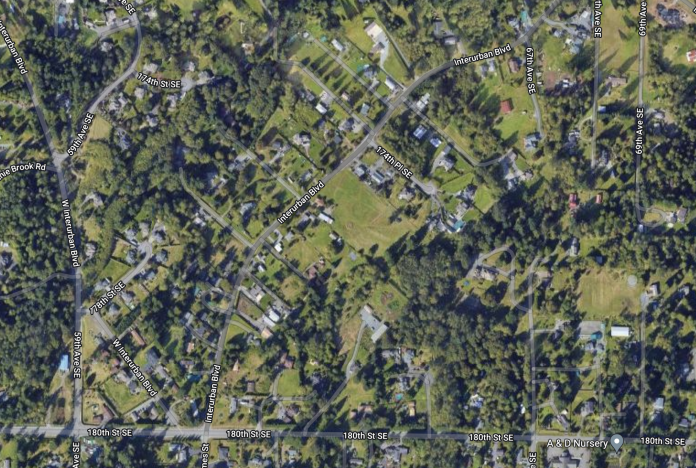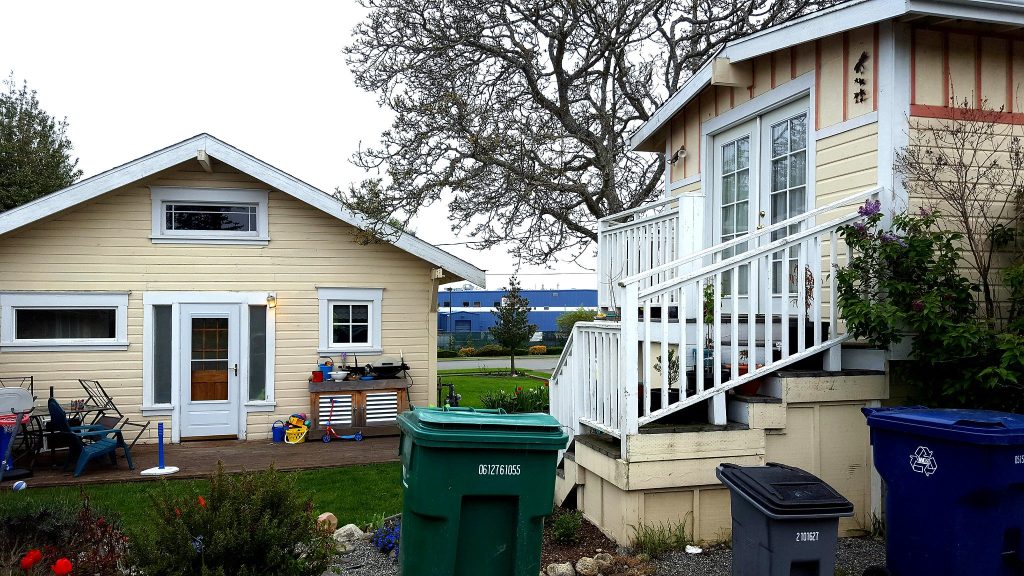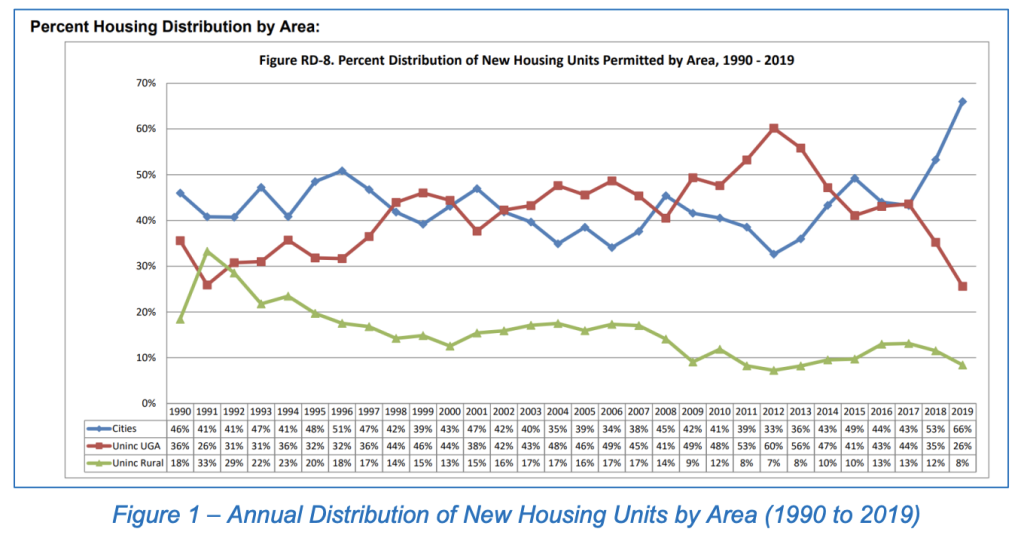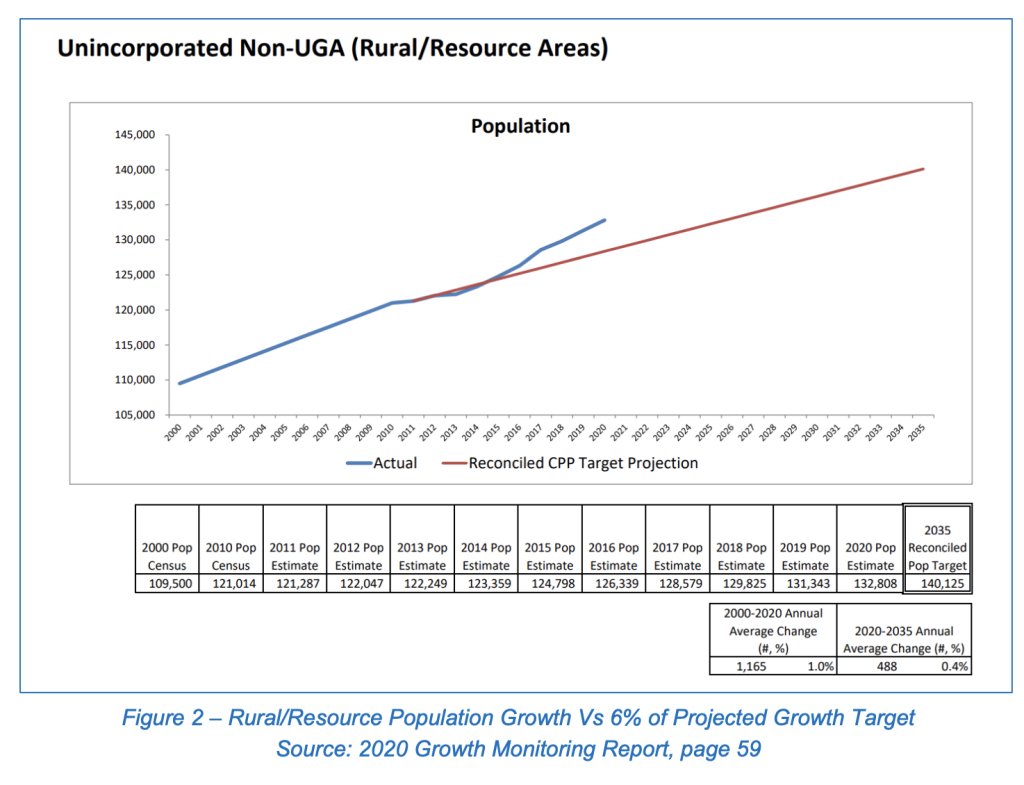
The Snohomish County Council moved to expand allowances for accessory dwelling units (ADUs) such as backyard cottages in rural areas this week. However, the step was unusual given that it was directly at odds with the Growth Management Act (GMA) and regional growth policy that directly discourage population growth in rural areas. It could put the county in a difficult position as it moves ahead with its next major comprehensive plan update, while also potentially opening up the county to legal challenges.
Last year, the county adopted sweeping ADU legislation. Generally, the legislation was much more permissive toward ADUs in the county, particularly in urban areas. The changes were numerous, such as increasing the size of allowed ADUs, increasing the number of ADUs per lot in unincorporated urban areas to two, authorizing one attached ADU on substandard rural lots, eliminating other major barriers to ADUs like owner-occupancy requirements, and reforming ADU design standards.
Some policymakers had hoped to include deeper changes in rural areas, too, that would allow detached ADUs (DADUs) on “substandard” lots. However, an amendment to permit that was pulled during last June’s public hearing and instead referred to the county’s planning commission over concerns that it might slow down the main ADU legislation that passed.
The county’s new legislation removes prohibitions of detached ADUs (DADUs) on lots that aren’t at least five acres in the R-5 zone and 100,000 square feet in the RC zone. Amendments also remove other locational principles from the development standards for DADUs. Consequently, the legislation will allow DADUs with 1,200 square feet of principal living space on nearly all rural lots. There’s no floor area limit on “unfinished basements” and attached garages. That could mean the proliferation of very large DADUs throughout the rural area exceeding 2,000 square feet in size. This would be especially lucrative on smaller substandard lots.
Substandard lots are lots that do not meet the minimum lot size of the underlying zone. For instance, in the R-5 zone, the minimum lot size is 200,000 square feet and typically limits the number of dwelling units to one per lot (although temporary dwelling units and accessory residential structures may be allowed). The R-5 zone is the most ubiquitous rural zone in the county.
Substandard lots are very common for historic reasons of less controlled zoning, but are incredibly common. This is because the county has an odd quirk that allows for recognition of “legal lots,” especially if portions of properties had been transferred by deed prior to 1972 (the year that subdivision laws came into effect for most rural divisions of land). Even the smallest slivers of historically deeded lands that may functionally be part of a contemporary lot can be recognized as long as it has sufficient legal access. Developers can then use the boundary line adjustment process to make such lots bigger to functionally become developable, say about an acre in size.

Historic deed chains that make up a parcel of land today could have been pieced together from many “parcels.” It’s not odd to have a 15-acre lot today that has a deed chain enabling resurrection of six legal lots. With a little creativity, a developer could adjust lot lines to create five one-acre lots and one 10-acre lot.
With this new ADU legislation, there could be much higher pressure to create substandard lots and develop them with one DADU and one principal residence. That’s because the law will essentially allow two houses to be located on substandard lots and nothing in state or local law would preclude each unit to be sold separately if a condominium is recorded on the substandard lot — effectively subdividing the property in all but name. As more suburban development goes into rural areas, this has the consequence of increasing carbon emissions, impervious surfaces, vehicle miles traveled, deforestation, and sprawl.
In staff reports, county officials acknowledge that allowing more rural DADUs could be in conflict with state and regional policy in several ways:
- “There is one potential concern associated with this ordinance. Allowing detached ADUs on substandard lots may slightly add to rural growth rates. These rates have been slowly declining but not as fast as called for in policy found in the General Policy Plan or the growth targets in the Countywide Planning Policies.”
- “In prior rulings, the Growth Management Hearings Board (GMHB) has said that attached units are not necessarily part of rural densities whereas detached units should count as two units in density calculations. Under GMA and GBHB decisions, density is one aspect of how counties must locally define ‘Rural Character’ and counties must take actions to protect rural character.”
- “Current growth targets for 2035 allow for only 6% of the County’s overall projected growth in rural areas…The share of rural housing unit growth has been declining over time although it is still above the current 6% target…”
These admissions of policy flaws could be major fodder for appeals; an appellant to the Growth Management Hearings Board could use these points to overturn the legislation.
But it’s not the only one. The adopted legislation also acknowledges that detached ADUs are the preferred ADU type in rural areas: “Nearly all permits for ADUs in rural and resource areas have been for detached ADUs (98% from 2012 and 2019, and 89% from 1994-2011). It is likely that this trend will continue.” Another legislative finding acknowledges state law that discourages rural sprawl: “RCW 36.70A.070(5)(c) requires that the variety of rural densities in (5)(b) contain measures to reduce ‘sprawling, low-density development in the rural areas.’ Such sprawl might otherwise be described as urban development.” Despite conclusions in relation to this that posit compliance with the law, there are real risks that permitting large DADUs — de facto single-family homes — on small rural lots in addition to principal single-family residences will encourage a new sprawl cottage industry.
Whether or not a watchdog like Futurewise or Pilchuck Audubon Society will appeal the legislation remains to be seen. But even if it stands, Snohomish County is going to have a difficult time complying with regional growth policy for rural areas without significantly adopting new legislation to put the breaks on rural growth.
Under the recently adopted regional growth plan, Vision 2050, the plan explicitly states that Snohomish County’s rural growth through 2050 is limited to 4.5% of allocated population growth or 18,500 more residents. This target was supposed to be lower at 3.0%, but county officials successfully lobbied for a higher sprawl number. As noted before, the county was struggling to even meet the previous 6.0% population growth target for rural areas under Vision 2040. Providing yet another avenue for rural population growth seems directly at odds with regional policy. In fact, regional policy would suggest that the county should be tightening up rural development regulations, such as further downzoning rural areas or even establishing moratoriums on rural housing production to halt sprawl.
Stephen is a professional urban planner in Puget Sound with a passion for sustainable, livable, and diverse cities. He is especially interested in how policies, regulations, and programs can promote positive outcomes for communities. With stints in great cities like Bellingham and Cork, Stephen currently lives in Seattle. He primarily covers land use and transportation issues and has been with The Urbanist since 2014.




